Today we welcome Doug the Kitchen Professor back to Loaves and Dishes! Doug is helping us with How to Cut a Bell Pepper and has graciously included photos and more great information. I hope that you will make Doug feel welcome and go check out his website for more great tips and information.
Bell peppers are versatile vegetables. They can be used to add flavor and color to soups, sandwiches, fajitas, and pastas. They can be roasted, stuffed, or even eaten on their own. I love using sweet bell peppers to dip into hummus.But when it comes to cutting a pepper, it can be a little challenging. For starters, they’re a bit oddly shaped. And they have all those little seeds inside to contend with. If you’re going to be cutting a lot of them to prepare a large meal or if you’re just looking for excellent presentation, this can pose a problem. Today, we’re going to look at one of the proper ways to cut your bell peppers. Like anything there are a few ways to cut a pepper.

Check out Doug the Kitchen Professor over on his website at The Kitchen Professor
Pick a pepper
The key to any good dish is using quality ingredients. This is especially important when it comes to produce. The best peppers come from your garden or your friend’s garden. If they aren’t in season yet, then you will have to find one at the grocery store.Look for a pepper with smooth, firm skin. Not only will this make the pepper easier to cut, this is a sign of freshness and great flavor. Avoid those with any wrinkles or brown spots as these guys are past their prime.
Make sure your pepper is brightly colored. Whether your pepper is green, red, orange, or even purple, make sure the color is vibrant and healthy. If the pepper has green or yellow spots near the stem, then it isn’t fully ripe.I like to pick peppers individually. At your grocery store, you’ve probably seen peppers sold in packs of three or so. While these shrink wrapped packs may have attractive packaging, you can examine the peppers from all sides and you never know whether there are any blemishes, wrinkles, or discoloration until you get them home. It takes only a few seconds more to pick each pepper individually and it’s time well spent.
Lastly, choose peppers that feel heavy. If they feel too light, they may not be ripe. To keep them ripe, store them in the vegetable crisper of your fridge or in a plastic bag left open. If your seal them in an airtight container, you are encouraging mold. Properly stored, your peppers should last about a week.
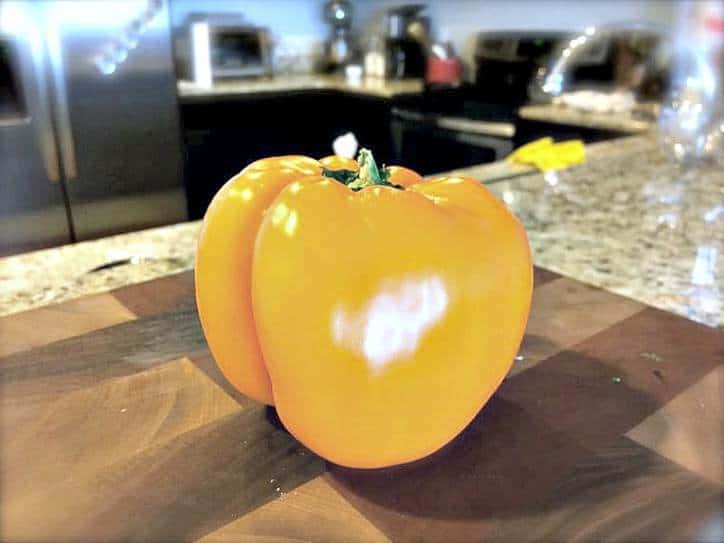
Cutting technique
Once you know how to do it, cutting your pepper is simple. A standard chef’s knife or an Asian style Santoku will be just the right size for a bell pepper. Be sure you start with a sharp knife that’s well maintained. If your knife is dull, an electric sharpener is the easiest way to keep your kitchen knives sharp.
Strips or Slices
Cutting peppers into strips is pretty straight forward once you get the stem and seeds out of the way. Slices are also the starting point to dicing, which we will cover next.
- To cut your pepper into strips, start by cutting the pepper down one side. Then, repeat for the other 3 sides. This way, you can easily avoid the stem and seeds completely.
- Remove any of the white ribs on the four pieces. A paring knife will be easier to use for this kind of detailed cutting.
- Then, place your pepper skin side down and cut it into strips lengthwise.
- If you have any white ribs left, you can cut them away easily with your knife.
Sliced peppers are the perfect size for fajitas. If you slice them really thin, they are great in sandwiches or salads.
Diced
I use diced peppers in things like gumbos and just about anytime I am cooking onions and peppers at the same time.
- To dice your pepper, start by cutting you pepper into strips.
- Next, turn your pepper slices ninety degrees.
- Make another series of cuts perpendicular to the ones you just made. The pepper will separate into uniform little cubes.
You can adjust the size based on what you are cooking and how big you want the pieces to be.
Step By Step Photo Sequence for How to Cut a Bell Pepper

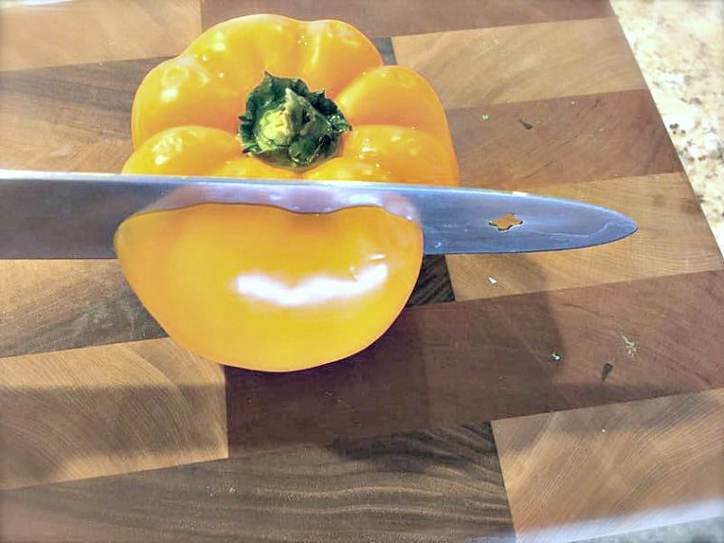
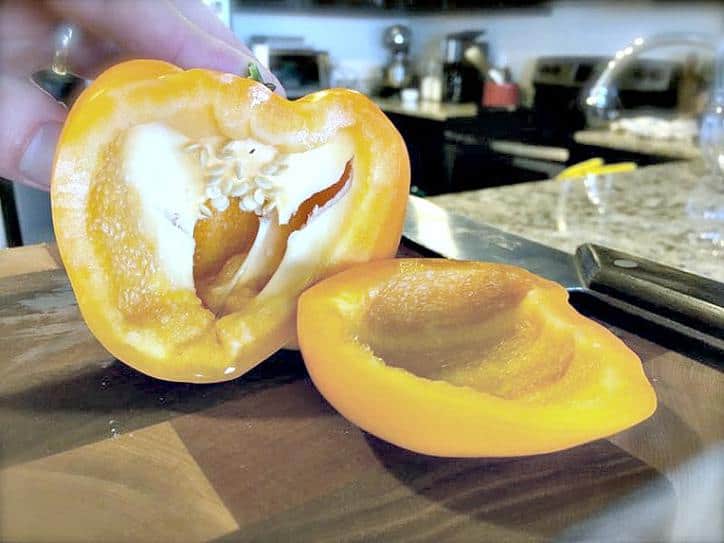
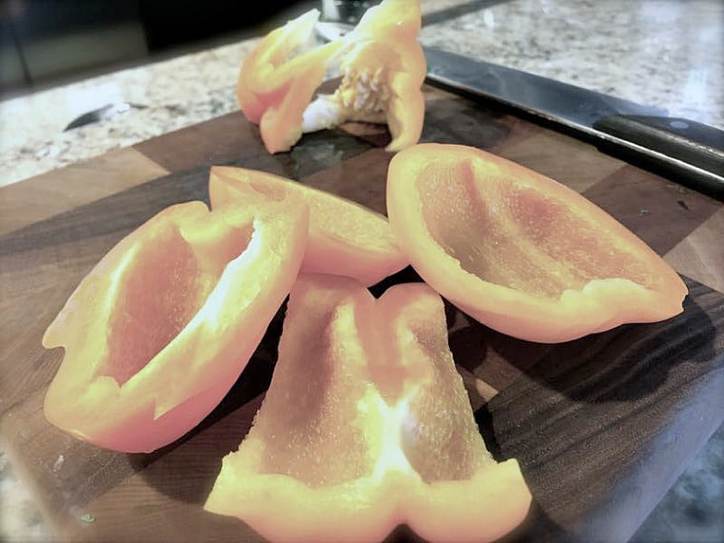
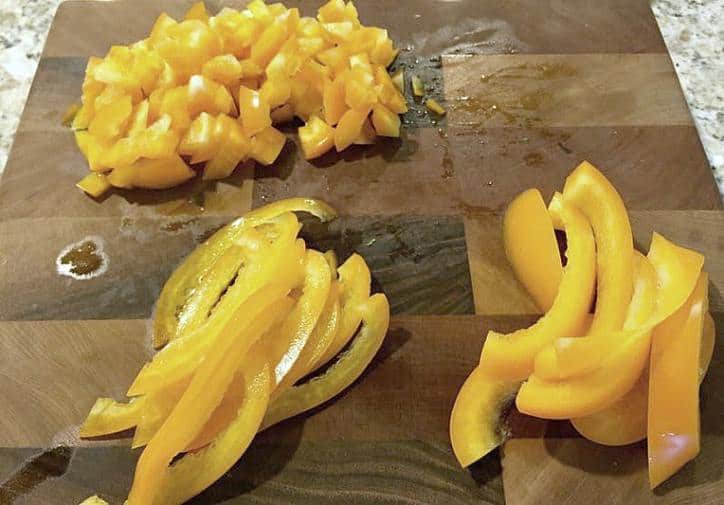
What About Stuffed Peppers?
Stuffed peppers are great and you can fill them with just about anything. Here is how I cut them:
- Cut the stem down as much as you can. A paring knife may make this easier.
- Next, turn your pepper slices ninety degrees.
- Make another series of cuts perpendicular to the ones you just made. The pepper will separate into uniform little cubes.
You can adjust the size based on what you are cooking and how big you want the pieces to be.
What About Stuffed Peppers?
Stuffed peppers are great and you can fill them with just about anything. Here is how I cut them:
- Cut the stem down as much as you can. A paring knife may make this easier.
- Switch over to your chef’s knife. Cut the pepper in half along its equator.
- Use your paring knife to cut out the membrane, the white parts. Pull out the seeds with your hands
- Now your pepper is ready to be stuffed.
-
Conclusion
And there you have it. Cutting peppers is easy when you know these tricks. With a little bit of practice, you’ll be able to slice and dice peppers uniformly and in record time.Remember to pick out great looking, ripe peppers. Garden fresh is the best. Make sure you use a sharp knife and take your time when cutting. Do you have any other tips on cutting bell peppers?

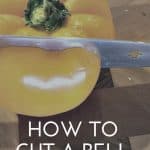
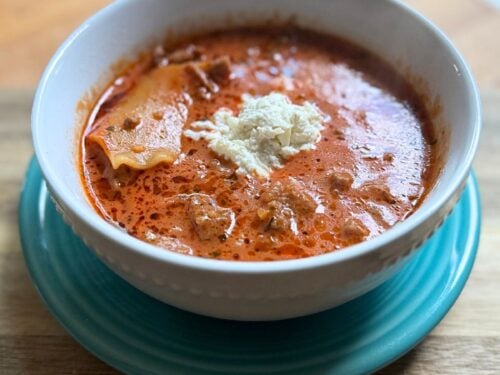
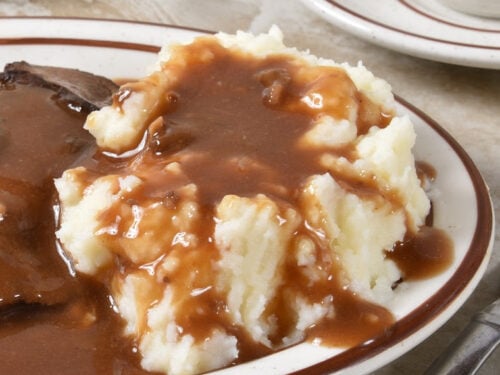

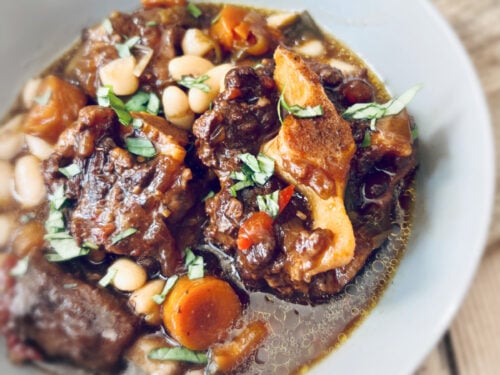

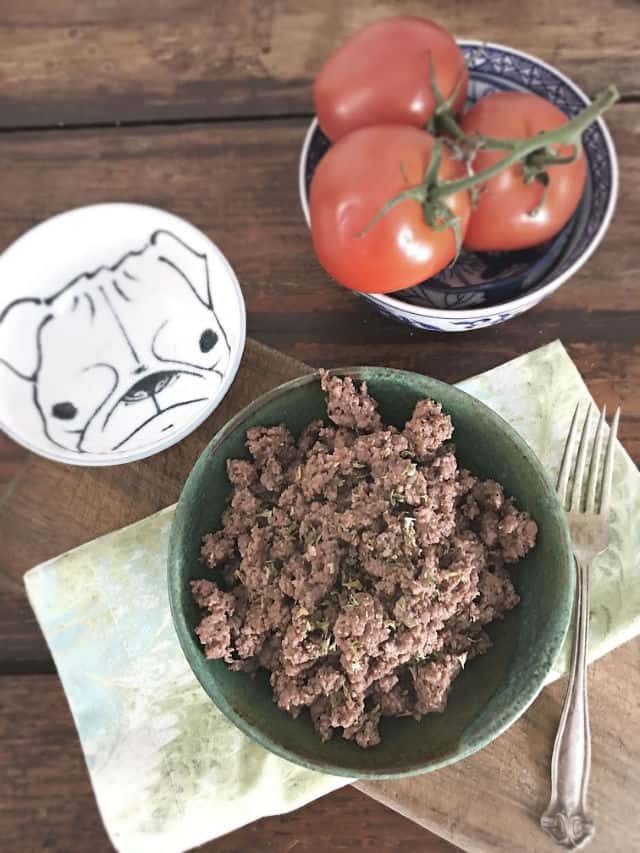
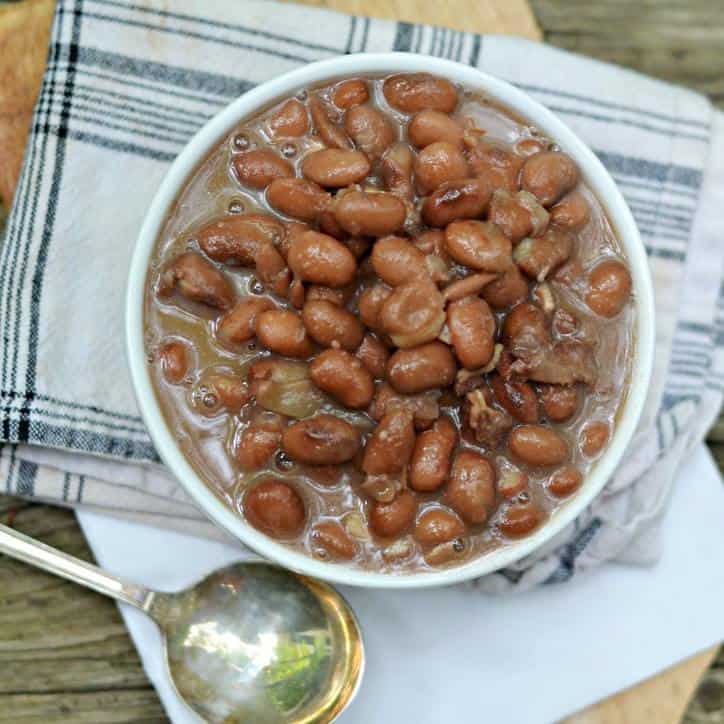
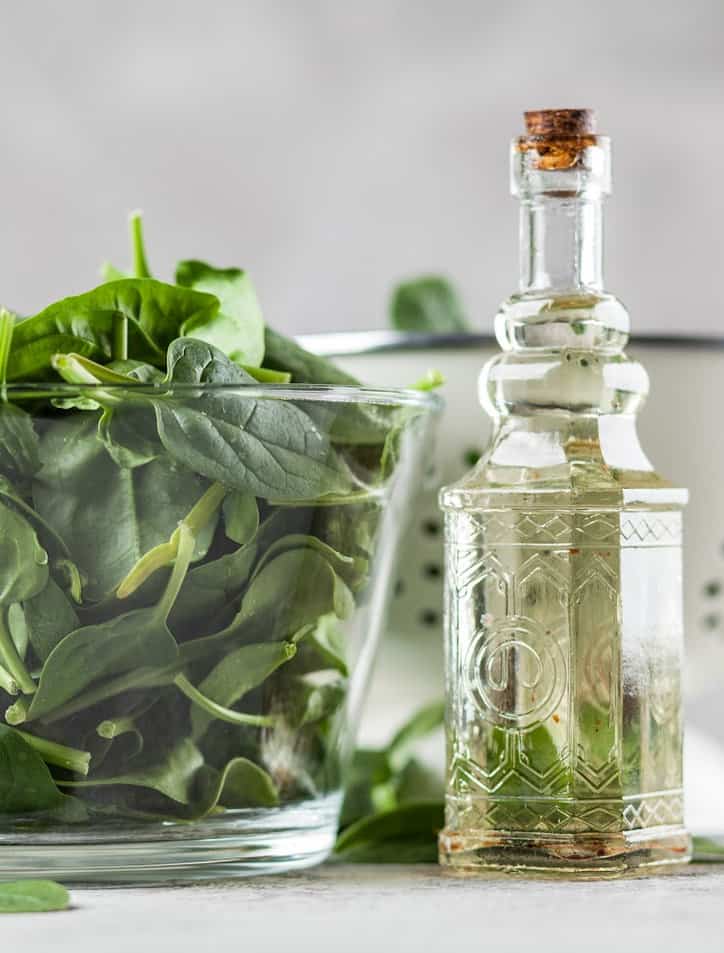
Mary says
Very informative...love all the pictures. Pinned. Thanks!
Wendi Spraker says
Thanks Mary! Doug does and awesome job of teaching is things!!